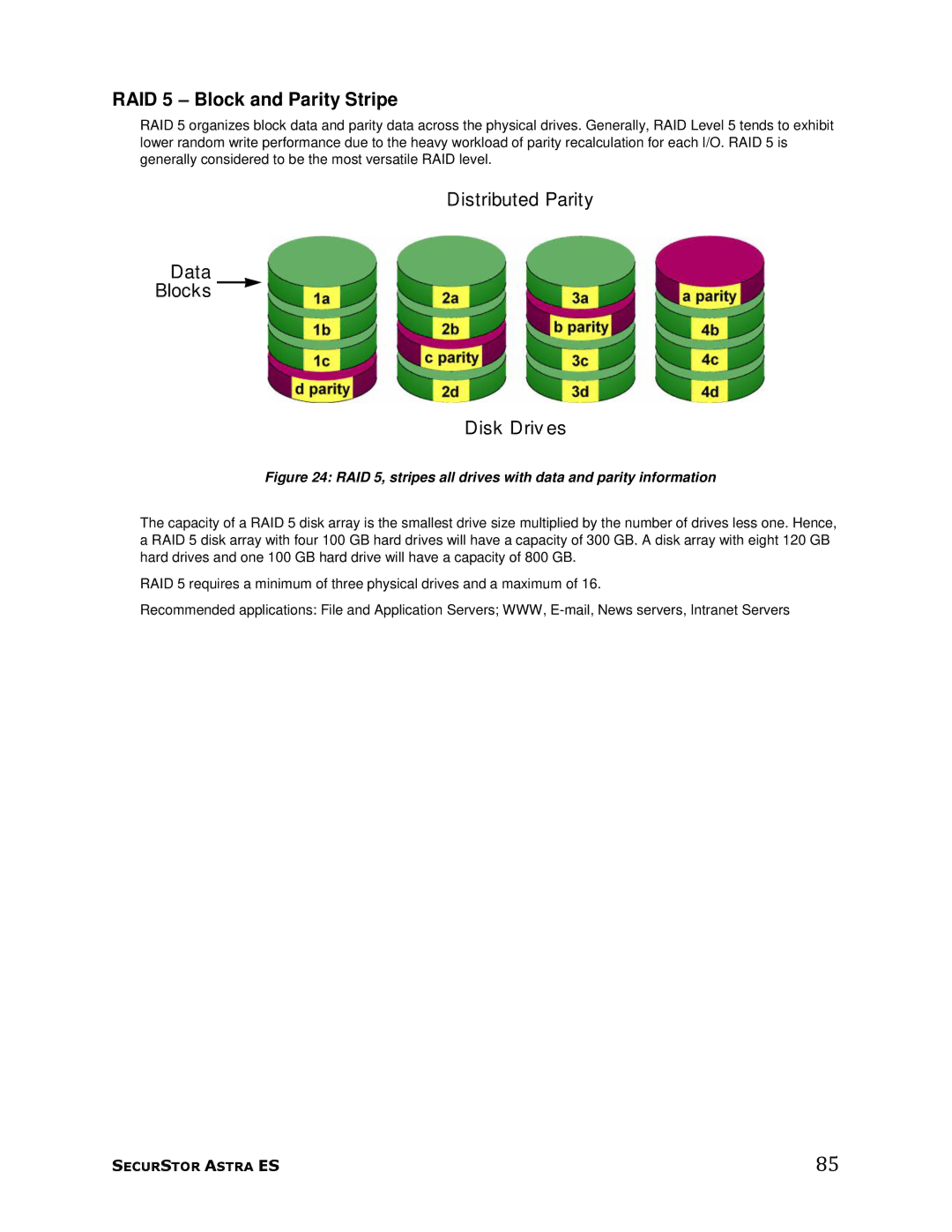
RAID 5 – Block and Parity Stripe
RAID 5 organizes block data and parity data across the physical drives. Generally, RAID Level 5 tends to exhibit lower random write performance due to the heavy workload of parity recalculation for each I/O. RAID 5 is generally considered to be the most versatile RAID level.
Distributed Parity
Data
Blocks 
Disk Driv es
Figure 24: RAID 5, stripes all drives with data and parity information
The capacity of a RAID 5 disk array is the smallest drive size multiplied by the number of drives less one. Hence, a RAID 5 disk array with four 100 GB hard drives will have a capacity of 300 GB. A disk array with eight 120 GB hard drives and one 100 GB hard drive will have a capacity of 800 GB.
RAID 5 requires a minimum of three physical drives and a maximum of 16.
Recommended applications: File and Application Servers; WWW,
SECURSTOR ASTRA ES | 85 |
